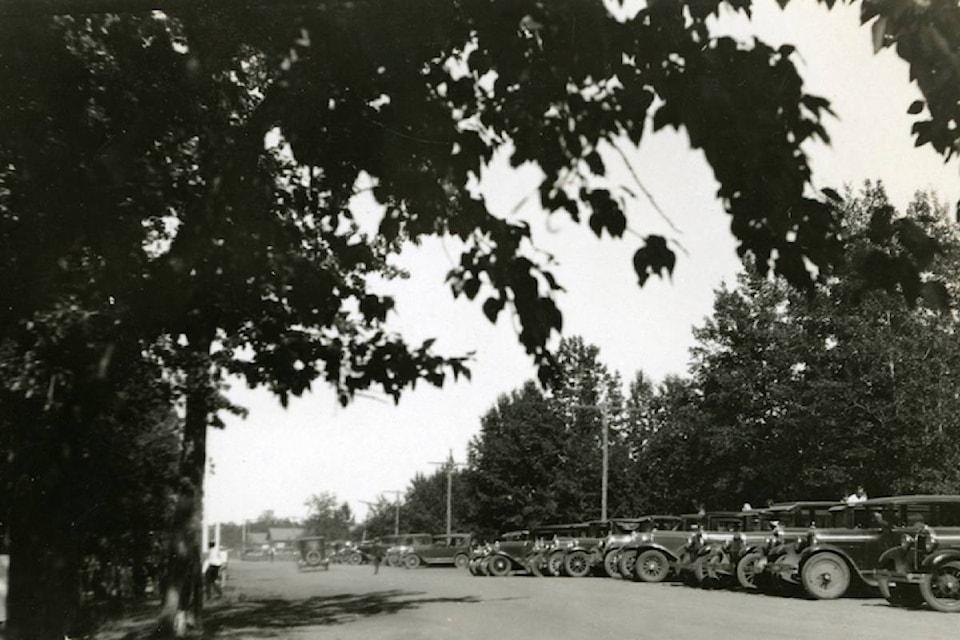Friday is the beginning of the annual May long weekend.
To many central Albertans, it marks the traditional start of summer. This year, the May long weekend will be quite unlike any other in recent history.
Nevertheless, hopefully, the weather will be good and families will have time together (within the limits set by the provincial government and local health authorities, of course).
This extraordinary year provides an opportunity to reflect back to another extraordinary year, 1932, and how hard times impacted central Alberta and such local resorts as Sylvan Lake.
While the Great Depression started with the stock market crash of October 1929, the bottom of the hard economic times did not hit until 1932.
The price of wheat plunged to a mere 21 cents per bushel. Cattle prices dropped so low that many farmers got a bill when they sent their livestock to market – the animals sold for less than the cost of the shipping to the Calgary Livestock Market.
More businesses went bankrupt. Unemployment rose to more than 20 per cent. The Red Deer Advocate published full page ads urging people to do everything possible to create some jobs.
Ironically, while the general economy suffered, a local resort such as Sylvan Lake did relatively well. People still felt a need to have a vacation, even if it was short and as cheap as possible.
Sylvan Lake provided a place where families could gather for a break at little or no cost. For those wanting to stay a few days, there were lots of places to pitch a tent.
Some entrepreneurs decided to invest in the opportunities created by tourism. The biggest investment was made by James P. Simpson. In 1928, he had built a substantial boathouse next to the large pier constructed the same year with financial assistance from the federal government. He did very well with that business.
In 1932, he decided to build a large dance hall on Lakeshore Drive, a bit east of the boathouse. Although there were already two other dance halls in Sylvan Lake – the Alexander Pavilion and the Oriental Gardens – he was sure there would be lots of business for all three halls.
He spent $10,000 on the structure, with the carpenters being paid up to 20 cents per hour. It was dubbed the Trianon Summer Palace (renamed in later years as the Varsity Hall).
On opening night, June 18, 1932, the crowd was so large that people were forced to stand outside through the fire escapes.
The Trianon Summer Palace was not the only successful new business.
In 1931, when the Alberta Provincial Police was disbanded, Sgt. Alex (Sandy) Robertson and his family decided to build a gas station, restaurant (tea house) and some cottages for rental on the corner directly across the street to the west of the new dance hall.
The Robertsons’ new businesses, which they opened early in the summer of 1932, was formally known as the Balmoral Service and Tea Room. They did very well with tourists looking for refreshments, a meal, an inexpensive place to stay, and/or gasoline for their car.
The Big Moo now stands on the site of the Balmoral.
The Collins family also decided to build another small restaurant on Lakeshore Drive, to the west of the Balmoral Service and Tea Room and the Trianon Dance Hall.
Originally, it was known as the Home Grill, but later became better known as The Centre. It did very well selling hamburgers, fries, hotdogs and cold refreshments, perfect for summer weather.
The Sylvan Lake summer season started with a bang on the first weekend of June with the provincial Elks convention.
While wet and somewhat cool weather slowed some of the usual early summer activities, by mid-July, it was very hot and sunny. The beaches, campgrounds and resort facilities were all packed with tourists.
The climax of the summer events came on Aug. 17, with the annual Sylvan Lake Regatta. The weather was ideal. Huge crowds turned out for the water sports competitions, Elks Lodge midway and many other activities. A particularly popular attraction was the speedboat races on the lake.
As the summer came to an end, unfortunately, the Great Depression continued to grind on across central Alberta.
However, like Sylvan Lake, conditions still were generally somewhat better in this area than in other parts of Western Canada. Consequently, local farmers and residents shared what they had by sending boxcars of relief supplies – food, clothing, etc. – to the dust bowl areas of southern Alberta and Saskatchewan.
Red Deer historian Michael Dawe’s column appears Wednesdays.
